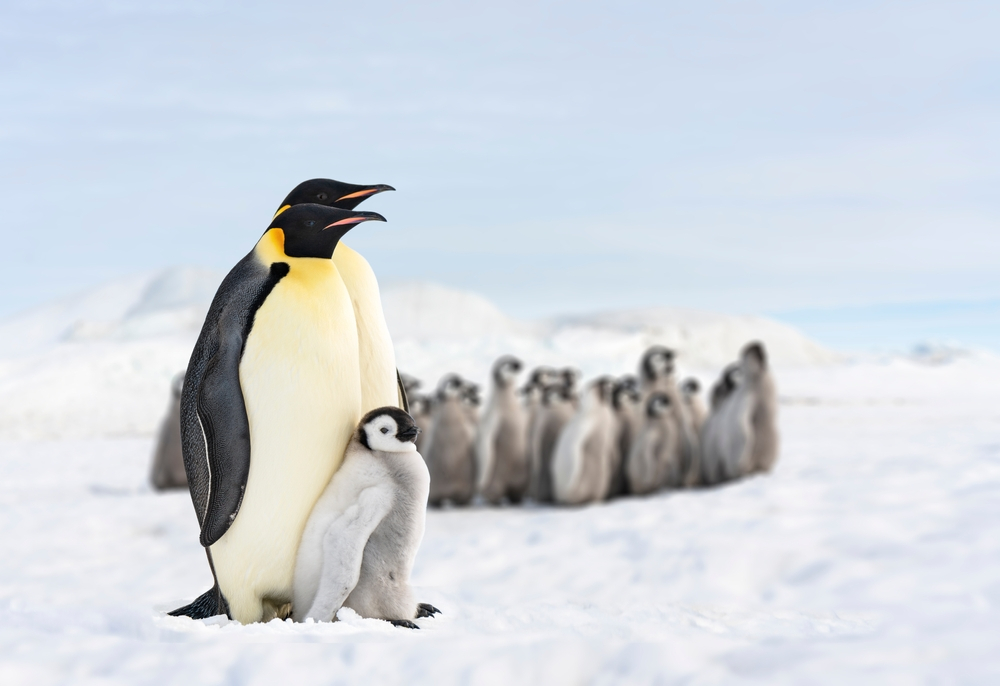Animals Unleashed: 10 Interesting Facts About Our Furry and Feathered Friends

Welcome to “Animals Unleashed: 10 Interesting Facts About Our Furry and Feathered Friends”! This blog is dedicated to sharing fascinating and lesser-known tidbits about the animal kingdom that are sure to surprise and delight you. Whether you’re an avid animal lover or simply curious about the natural world, you’ll find something intriguing here.
From the remarkable memories of elephants to the mimicking abilities of parrots, our journey through diverse animal life will highlight the extraordinary traits and behaviors that make each species unique. So, join us as we explore the wonders of the animal world and gain a deeper appreciation for our furry and feathered friends.
1. Remarkable Memory of Elephants
Elephants are renowned for their exceptional memory, which plays a crucial role in their survival and social structure. These majestic animals have the ability to remember a vast array of smells, sounds, and visual cues, which allows them to recognize fellow elephants, even after long periods of separation.
For instance, mother elephants can recall the scent of their calves amidst a crowded herd, ensuring the family unit stays intact. Elephants’ memory also extends to geographical locations; they can remember the locations of water sources and safe migratory routes over large distances and throughout many years.
This impressive mental map is particularly vital during droughts, guiding herds to life-sustaining resources. Their extraordinary memory abilities underscore the importance of preserving the habitats and environments that elephants have come to know and rely on.
2. The Language of Dolphins
Dolphins are known for their sophisticated communication skills, employing a complex system of clicks, whistles, and body language to convey messages and maintain social bonds. Each dolphin has a unique signature whistle, akin to a name, which allows them to identify and call out to one another.
Recent research has further illuminated the intricacy of dolphin communication, revealing that they can even mimic certain sounds and may use a form of syntax to build more complex “sentences.”
Studies have shown that dolphins use specific click patterns and frequencies to relay detailed information about their environment, such as the presence of food or potential threats. This rich tapestry of communication highlights just how advanced and social these aquatic mammals are, offering fascinating insights into the parallels between human and dolphin languages.
3. Cats’ Extraordinary Hearing
Cats possess an extraordinary hearing range, far surpassing that of humans. While humans can hear sounds up to 20,000 Hertz, cats can detect frequencies as high as 65,000 Hertz. This superior auditory capability enables them to hear the subtle squeaks of rodents and other small prey, making them exceptional hunters in the wild.
At home, this acute sense of hearing allows cats to detect the faintest of sounds, such as the opening of a food container or the footsteps of a familiar family member returning home. This heightened awareness keeps them alert and contributes to their reputation for being always vigilant and responsive to their environment. In both wild and domestic settings, a cat’s extraordinary hearing is a vital tool for survival and interaction.
4. The Intelligence of Crows
Crows are remarkable for their problem-solving skills and tool use, demonstrating intelligence that rivals that of primates. These birds have been observed using sticks to extract insects from tree bark, dropping nuts onto roads for cars to crack open, and even creating hooks to retrieve food from hard-to-reach places. Recent studies have showcased their cognitive prowess in controlled experiments, where crows have solved complex puzzles that involve sequential steps and understanding of causal relationships.
For instance, researchers have documented instances where crows drop pebbles into water-filled tubes to raise the water level and reach a floating treat, a classic test of problem-solving aptitude known as the Aesop’s Fable experiment. These anecdotes and studies underline the impressive intellect of crows, offering compelling insights into the adaptive capabilities and sophisticated thinking processes of these ingenious birds.
5. Penguins’ Unique Nesting Habits
Penguins exhibit a fascinating variety of nesting habits that reflect their adaptability and ingenuity. Emperor penguins, for instance, are famous for their unique approach to nesting, where males incubate the eggs on top of their feet under a flap of skin, called a brood pouch, during the harsh Antarctic winter.
This keeps the eggs warm and protected from the icy ground. In contrast, Adélie penguins construct their nests out of small stones, painstakingly collecting and arranging them in a circular formation on rocky, ice-free ground.
The Gentoo penguins, on the other hand, display a more varied approach, using pebbles, grass, and feathers to build their nests on beaches and coastal tussock grasslands. These diverse nesting strategies highlight how different penguin species have evolved specific behaviors to ensure the survival of their offspring in some of the most extreme environments on Earth.
6. Dogs’ Incredibly Sensitive Nose
Dogs possess an incredibly sensitive sense of smell, estimated to be between 10,000 to 100,000 times more accurate than that of humans. This phenomenal olfactory capability is due to several anatomical and functional differences. Their noses contain up to 300 million olfactory receptors, compared to about 6 million in humans, and the part of their brains dedicated to analyzing smells is, proportionally, 40 times larger than ours.
With each sniff, dogs can inhale and then exhale through slits at the sides of their noses, which creates a continuous flow of air, allowing their receptors to detect even the faintest scent. This extraordinary sense of smell is not only a marvel of nature but also an invaluable asset in various fields.
In search and rescue operations, dogs can locate missing persons by picking up on their unique scent trails, even in challenging environments. In detection roles, they are trained to sniff out substances like narcotics, explosives, and even diseases such as cancer and diabetes.
Additionally, dogs use their olfactory prowess to recognize individuals and provide companionship, enhancing the strong bond they share with humans. This powerful sense of smell truly sets dogs apart, showcasing their remarkable role as both companions and critical contributors to human safety and health.
7. The Colorful Vision of Birds
Birds possess an extraordinary ability to see a broader spectrum of colors than humans, including ultraviolet light, which plays a critical role in their behavior and mating rituals. This enhanced color vision allows birds to perceive subtle differences in plumage that are invisible to the human eye, helping them identify potential mates and rivals. During mating season, vibrant and UV-reflective feathers become crucial indicators of fitness and genetic quality, influencing mate selection.
Additionally, birds use their keen color discrimination to interact with their environment more effectively, from spotting ripe fruits against lush foliage to camouflaging their nests from predators. This heightened visual capability underscores the sophisticated ways in which birds navigate their world, making color a pivotal element in their daily lives.
8. Octopus’ Transformative Skills
Octopuses are renowned for their incredible camouflage and transformation abilities, which rank among the most sophisticated in the animal kingdom. These remarkable cephalopods possess specialized skin cells called chromatophores, which allow them to change color and texture in a matter of milliseconds, seamlessly blending into their surroundings.
For example, an octopus can rapidly alter its appearance to mimic the sandy ocean floor, coral reefs, or even floating kelp, thereby evading predators and sneaking up on prey. In addition to chromatophores, they also have iridophores and leucophores, which further enhance their ability to reflect light and adapt to different environments.
The evolutionary advantages of these transformative skills are manifold. By mastering the art of disguise, octopuses can avoid detection from predators such as sharks and larger fish, secure food by ambushing unsuspecting prey, and communicate with each other through dynamic body patterns. This unparalleled ability to morph their appearance not only ensures their survival but also illustrates the immense adaptability and intelligence of these fascinating marine creatures.
9. Social Structures of Wolves
The social structures of wolves are both intricate and fascinating, embodying a hierarchical pack dynamic that ensures the survival and efficiency of the group. At the core of this hierarchy is the alpha pair, typically a dominant male and female, who lead the pack and are primarily responsible for mating and decision-making.
Their leadership is supported by beta wolves, which are subordinate to the alphas but still hold significant authority, often stepping in to help lead hunts and mediate conflicts. Below the betas are the mid-ranking wolves, who maintain the daily pack activities and help care for the pups. At the bottom of the hierarchy are the omega wolves, which, despite their low rank, play crucial roles in maintaining social cohesion by diffusing tensions through playful behavior.
Each member of the pack has defined roles and responsibilities, from hunting and guarding territories to nurturing the young, creating a well-orchestrated social structure that enhances the collective strength and survival skills of these remarkable animals.
10. The Mimicking Abilities of Parrots
Parrots are renowned for their extraordinary ability to mimic human speech and a variety of other sounds, making them one of the most fascinating avian species. This impressive vocal imitation stems from their highly developed brain regions responsible for vocal learning and production.
The cognitive implications of this ability are profound, as it indicates advanced auditory memory, learning capacity, and problem-solving skills. When parrots mimic human speech, they are not merely copying noises but are often engaging in complex social interactions, which can strengthen the bond between them and their human companions.
This bond is further enhanced as parrots frequently use their mimicking abilities to communicate needs, express emotions, and even elicit laughter or affection from their owners. Their remarkable talent not only highlights their intelligence but also underscores the deep, reciprocal relationships they can form with humans, making them cherished pets and companions.
Conclusion
In exploring “Animals Unleashed: 10 Interesting Facts About Our Furry and Feathered Friends,” we’ve delved into some of the most captivating and enlightening aspects of animal behavior and biology. From the exceptional olfactory prowess of dogs that aids in critical search and detection tasks to the UV vision of birds that enhances their mating rituals, we have highlighted the remarkable adaptations that make animals truly unique. We’ve marveled at the camouflage capabilities of octopuses, the sophisticated social structures of wolves, and the impressive mimicking abilities of parrots, among other intriguing revelations.
These fascinating facts encourage us to look closer and appreciate the incredible diversity and ingenuity present in the animal kingdom. By observing and learning about these unique qualities, we not only gain a deeper respect for animals but also enrich our own lives with wonder and inspiration.
We invite you to share your personal experiences or any interesting facts about animals in the comments below. Whether it’s a story about an extraordinary encounter with a pet or an intriguing insight about wildlife, your contributions can help foster a community of shared knowledge and appreciation for the creatures that share our world.




